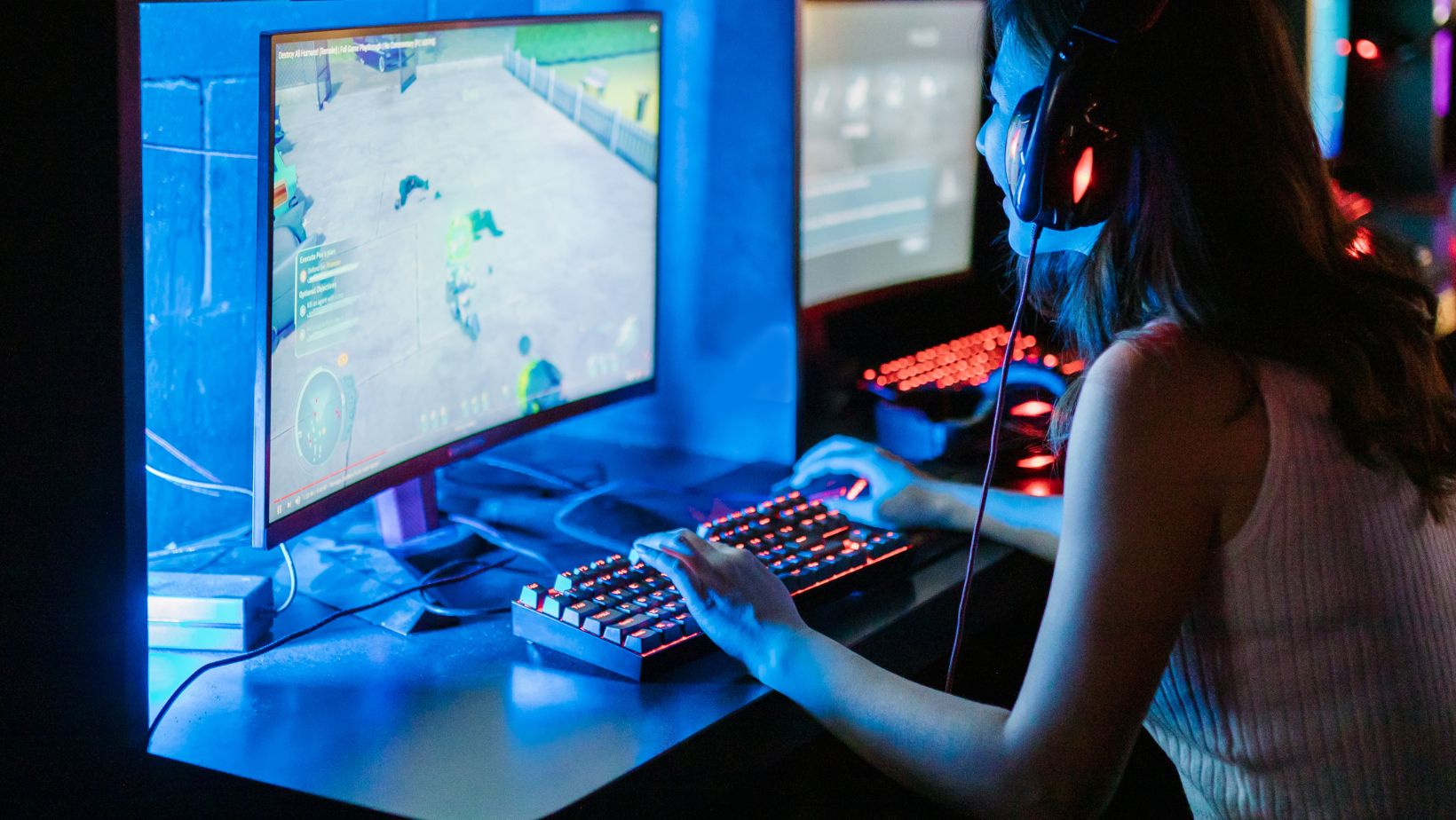The alarm blares at 3 AM. The project lead jolts awake to find another urgent message from the QA team: “Critical bug found in the multiplayer system. Need immediate attention.” With the launch date just weeks away, the small development team is already working 80-hour weeks, and now they face a problem that requires specialized networking expertise they simply don’t have in-house.
This nightmare scenario plays out in studios worldwide as ambitious game projects push small teams beyond their limits. The modern gaming landscape demands titles that rival AAA productions in quality while meeting increasingly tight deadlines and budget constraints. Players expect seamless multiplayer experiences, stunning visuals, immersive audio, and flawless performance across multiple platforms—requirements that stretch even the most talented teams thin.
The traditional approach of handling everything internally is becoming unsustainable. According to the Game Developers Conference (GDC) State of the Industry report, a talent shortage in game development is still a widespread issue, highlighting a critical gap between project ambitions and available expertise.
The solution lies not in hiring massive teams or compromising on quality, but in embracing a collaborative approach that harnesses specialized expertise exactly when and where it’s needed most.
The Collaborative Revolution: Understanding Modern Game Development Partnerships
Game co-development represents a fundamental shift in how studios approach complex projects. Rather than struggling to build every capability internally, forward-thinking studios partner with specialized teams to share both the workload and expertise required for modern game development.
This collaborative model differs significantly from traditional outsourcing relationships. Instead of handing off isolated tasks to external contractors, co-development involves multiple studios working together as integrated partners throughout the entire development lifecycle. Each partner contributes their unique strengths while maintaining shared ownership of the project’s success.
Breaking Down Traditional Barriers
The boundaries between internal and external development become fluid in co-development relationships. Partners share development tools, communication channels, and project management systems, creating unified workflows that feel seamless to all participants. This integration enables rapid knowledge transfer and collaborative problem-solving that benefits the entire project.
Shared Vision, Distributed Execution
Successful co-development requires alignment on creative vision while distributing technical execution across specialized teams. Partners must understand not just what they’re building, but why specific design decisions matter to the overall player experience. This shared understanding enables autonomous decision-making that serves the project’s best interests.
The Anatomy of Success: How Co-Development Transforms Project Capabilities
Modern games require an increasingly diverse skill set that few studios can maintain internally at expert levels. Co-development addresses this challenge by creating virtual teams that combine the best talents from multiple organizations, resulting in capabilities that exceed what any single studio could achieve alone.
Core advantages of collaborative development include:
- Access to specialized expertise without permanent hiring commitments
- Distributed risk across multiple organizations and skill sets
- Accelerated development timelines through parallel workstreams
- Enhanced creativity through diverse perspectives and approaches
- Improved quality through specialized knowledge application
Expertise On Demand
Different game development phases require different types of expertise. Early concept development benefits from creative visionaries and game designers. Technical implementation needs skilled programmers and system architects. Polish phases require quality assurance specialists and user experience experts. Co-development enables studios to engage the right expertise at the right time without maintaining full-time specialists in every area.
Risk Distribution and Management
Large game projects carry significant technical and financial risks. Hardware compatibility issues, market timing challenges, and technical implementation problems can derail entire projects. Co-development distributes these risks across multiple partners, each bringing their own mitigation strategies and backup plans.
When one partner encounters difficulties, others can provide support or absorb additional responsibilities to keep projects on track. This resilience proves invaluable when facing the unexpected challenges that inevitably arise during complex game development.
Navigating the Partnership Journey: The Co-Development Process Unveiled
The co-development process requires careful orchestration to ensure that multiple teams work together effectively toward shared goals. Success depends on establishing clear communication channels, defined responsibilities, and synchronized workflows that enable seamless collaboration.
Foundation Phase: Alignment and Planning
Initial project phases focus on establishing a shared understanding between all partners. This includes technical architecture decisions, art style guidelines, performance targets, and quality standards that will guide development throughout the project lifecycle.
Partners must align their development tools, version control systems, and communication protocols to enable effective collaboration. Technical compatibility issues identified early prevent costly integration problems later in development.
Parallel Development Streams
Once foundations are established, partners can work on different aspects of the game simultaneously. While one team focuses on core gameplay mechanics, another might develop multiplayer infrastructure, and a third creates art assets and animations.
This parallel approach dramatically accelerates development timelines compared to sequential development models. However, it requires careful coordination to ensure that different components integrate smoothly when combined.
Integration and Quality Assurance
Regular integration milestones bring together work from all partners to identify compatibility issues and ensure cohesive player experiences. These integration points also provide opportunities for cross-team knowledge sharing and creative collaboration.
Quality assurance becomes a shared responsibility across all partners, with each team contributing its specialized testing expertise. Network specialists verify multiplayer functionality, artists ensure visual consistency, and gameplay experts validate mechanical balance and player engagement.
Building the Dream Team: Specialized Expertise Areas in Co-Development
Game co-development services excel by providing deep expertise in specific development areas that complement internal team capabilities. This specialization enables partners to deliver higher-quality results than generalist teams while focusing on areas where they provide maximum value.
Technical Architecture and Programming
Complex games require robust technical foundations that can support advanced features while maintaining performance across diverse hardware configurations. Specialized technical partners bring experience with engine optimization, platform-specific implementations, and scalable architecture design.
These technical experts understand the subtle performance implications of different implementation approaches and can guide architectural decisions that prevent costly refactoring later in development.
Art and Visual Design
Visual excellence requires expertise across multiple disciplines, including concept art, 3D modeling, animation, visual effects, and user interface design. Art-focused co-development partners provide access to specialists who understand both creative vision and technical implementation constraints.
Audio and Sound Design
Immersive audio experiences require specialized knowledge of spatial audio systems, dynamic music composition, sound effect creation, and platform-specific audio implementation.

Audio specialists bring both creative talents and technical expertise that enhance player immersion.
Key areas where specialized partners add value:
- Platform-specific optimization and certification requirements
- Advanced graphics programming and shader development
- Multiplayer networking and server infrastructure
- User interface design and accessibility implementation
- Quality assurance across multiple platforms and configurations
Quality Assurance and Testing
Comprehensive testing requires understanding both technical systems and player psychology. QA specialists bring systematic testing methodologies, automated testing tools, and experience identifying edge cases that could impact player experiences.
The Collaborative Future: Embracing Co-Development for Competitive Success
Modern gaming’s complexity makes co-development essential rather than optional. Studios that master collaborative development gain competitive advantages by combining internal vision with external expertise, enabling ambitious projects while maintaining creative control.
This model provides financial flexibility, allowing strategic resource investment instead of maintaining expensive capabilities only needed occasionally. More resources can then focus on creative innovation and market differentiation.
Success requires embracing collaborative approaches that harness the best available talent regardless of organizational boundaries. Start exploring co-development opportunities today—identify areas where specialized expertise could enhance your projects and research partners who align with your creative vision. The games your players are waiting for might require talents beyond your current team, and co-development provides the path to accessing them.

